Yakovlev Yak-40
| Yak-40 | |
|---|---|
 | |
| Volga-Dnepr Yak-40 | |
| Role | Regional jet/ VIP transport |
| National origin | Soviet Union |
| Manufacturer | Yakovlev |
| Designer | Yakovlev |
| First flight | October 21, 1966 |
| Introduction | September 1968 (Aeroflot) |
| Status | In Limited Service |
| Primary user | Aeroflot (Former) |
| Produced | 1967–1981 |
| Number built | 1,011 |
|
| |


The Yakovlev Yak-40 (NATO reporting name: Codling) is a small, three-engined airliner. It was introduced in September 1968 with Aeroflot.
Development
By the early 1960s, the Soviet state airline Aeroflot's international and internal trunk routes were flown by jet or turboprop powered airliners but their local services, many of which operated from grass airfields, were operated by obsolete piston engined aircraft such as the Ilyushin Il-12, Il-14 and Lisunov Li-2.[1] Aeroflot wanted to replace these elderly airliners with a turbine-powered aircraft, with the Yakovlev design bureau being assigned to design the new airliner. High speed was not required, but it would have to operate safely and reliably out of poorly equipped airports with short (less than 700 m, (2,300 ft)) unpaved runways in poor weather.[2]
Yakovlev studied both turboprop and jet-powered designs to meet the requirement, including Vertical Take-Off and Landing (VTOL) designs with lift jets in the fuselage or in wing-mounted pods, but eventually they settled on a straight-winged tri-jet carrying 20 to 25 passengers. Engines were to be the new AI-25 turbofan being developed by Ivchenko at Zaporozhye in Ukraine.[3]
Design
The Yak-40 is a low-winged cantilever monoplane with unswept wings, a large T-tail and a retractable tricycle landing gear. The passenger cabin is ahead of the wing, with the short rear fuselage carrying the three turbofan engines, with two engines mounted on short pylons on the side of the fuselage and a third engine in the rear fuselage, with air fed from a dorsal air-intake by an "S-duct", as is an auxiliary power unit, fitted to allow engine start-up without ground support on primitive airfields.[4][5] The three AI-25 engines are two-shaft engines rated at 14.7 kN (3,300 lbf). The engines have no jetpipes, and initially no thrust reversers.[6][7]
The pressurized fuselage has a diameter of 2.4 metres (94 in). Pilot and co-pilot sit side-by-side in the aircraft's flight deck, while the passenger cabin has a standard layout seating 24 to 27 passengers three-abreast, although 32 passengers can be carried by switching to four-abreast seating. Passengers enter the aircraft via a set of ventral airstairs in the rear fuselage.[7][8]
The wing is fitted with large trailing-edge slotted flaps, but has no other high-lift devices, relying on the aircraft's low wing loading to give the required short-field take-off and landing performance. The wings join at the aircraft centerline, with the main spar running from wingtip to wingtip The wings house integral fuel tanks with a capacity of 3,800 litres (1,000 US gal; 840 imp gal). The aircraft has a large fin, which is swept back at an angle of 50 degrees to move the tailplane rearwards to compensate for the short rear fuselage. The horizontal tailplane itself is unswept.[5][9]
Operational history
The first of five prototypes made its maiden flight on 21 October 1966,[7] with production being launched at the Saratov Aviation Plant in 1967 and Soviet type certification granted in 1968.[5] The type carried out its first passenger service for Aeroflot on 30 September 1968.[9] In the 1972 version, a tailspin was removed. In 1974, new version was introduced, with non-stop flight distance increased. Also, the forward door on the right side of the fuselage changed its place – it was located together with the sixth window.
In 1975, the last upgrade of Yak-40 took place – the number of cabin windows on the right side changed from nine to eight.
By the time production ended in November 1981, the factory at Saratov had produced 1,011 aircraft. By 1993 Yak-40s operated by Aeroflot had carried 354 million passengers.[10] As well as being the backbone of Aeroflot's local operations, flying to 276 domestic destinations in 1980, the Yak-40 was also an export success. More than this, Yak-40 became the first Russian/Soviet aircraft getting flying certificates of Italy and West Germany. It was demonstrated in 75 countries of the world, including the USA, where orders on Yak-40 were made.
A total of 130 were exported to Afghanistan, Angola, Bulgaria, Cambodia, Cuba, Czechoslovakia, Equatorial Guinea, Ethiopia, Germany, Honduras, Hungary, Italy, Laos, Madagascar, Philippines, Poland, Syria, Vietnam, Yugoslavia and Zambia.[5][10]
Variants

- Yak-40 – The first production model.
- Yak-40-25 Military conversion with the nose of a MiG-25R and SRS-4A Elint installation.
- Yak-40 Akva (Aqua) – Military conversion with nose probe, pylon-mounted sensors, a fuselage dispenser and underwing active jammer pods.
- Yak-40D (Dal'niy – long-distance) – with non-stop flight distance enlarged.
- Yak-40EC – Export version.
- Yak-40 Fobos (Phobos) – Military conversion with two dorsal viewing domes and a removable window on each side.
- Yak-40K – cargo / convertible / combi version with a large freight door. Produced in 1975–81.
- Yak-40 Kalibrovshchik – Military Elint conversion with a "farm" of blade, dipole and planar antennas.
- Yak-40L – Proposed version with two Lycoming LF507-1N turbofans, a joint program between Skorost and Textron (now Allied-Signal) Lycoming. The original design would have had a slightly swept wing.
- Yak-40 Liros – Military conversion with nose probe carrying air-data sensors.
- Yak-40M – Proposed 40-seat stretched passenger version.
- Yak-40 M-602 – Flying testbed with a Czechoslovak M 602 turboprop installed in the nose.
- Yak-40 Meteo – Military conversion with multipole dipole antennas and fuselage dispenser.
- Yak-40P – Yak-40L with large nacelles projecting ahead of the wings.
- Yak-40REO – Military conversion with large ventral canoe for IR linescan. Lateral observation blister on right side.
- Yak-40 Shtorm – Military conversion with multiple probes and sensors on the forward sidewalls.
- Yak-40TL – Proposed upgraded version, to be powered by three Lycoming LF 507 turbofan engines.
- Yak-40V – Export version powered by three AI-25T turbofan engines.
Operators





Civilian operators
As of August 2013 a total of 45 out of 1011 Yakovlev Yak-40 aircraft remain in service. The airworthiness of several Yak-40 of smaller Russian and Central Asian charter airlines is uncertain, as is the whereabouts of one Air Libya Tibesti aircraft after the civil war. Most aircraft in service today have been reconfigured for VIP-charter services, with fewer than ten remaining in scheduled passenger service. Known operators are:[11]
- Ariana Afghan Airlines – former operator
- Bakhtar Afghan Airlines – former operator
- TAAG Angola Airlines - former operator
- Azerbaijan Airlines – former operator
- Lloyd Aéreo Boliviano – former operator
- Balkan Bulgarian Airlines – former operator
- Hemus Air – former operator
- Aerocaribbean – former operator
- Cubana – former operator
- Government of the Czech Republic
- CSA Czechoslovak Airlines – former operator
- Government of Czechoslovakia
- Slov-Air – former operator
- EgyptAir – former operator
- General Air – former operator
- Olympic Airways – former operator
- Rollins Air – former operator
- Malév – former operator
- Air Kokshetau – former operator
- Bek Air – former operator (last 3 retired in 2013)[12]
- East Kazakhstan Region Air Enterprise – 2 in cargo configuration
- Euro-Asia Air – 2: 1 for charter only and one in cargo configuration
- Semeyavia – 2 for charter only, in cargo configuration, being phased out
- Tulpar Air Service – former operator
- Zhetysu Aviakompania – 2: one for charter and one in cargo configuration
- Zhezkazgan Air – 1 in scheduled service
- Kyrgyzstan Airlines – former operator
- Aertirrena
- Alinord
- Avioligure
- Air Libya Tibesti – former operator
- Air Lithuania – former operator
- Air Moldova – former operator
- Interisland Airlines – 1 in lounge configuration, for charter only
- 2nd Sverdlovsk Air Enterprise – former operator
- AeroBratsk – 1 in cargo configuration
- Aerolik - former operator[13]
- Ak Bars Aero – 10 in lounge configuration for charter only, 2 being updated, 8 in process of retirement
- Amur Airlines – 3
- Aviakompaniya SKOL – 1 for charter only, currently leased out to Tulpar Air
- Aviastar - former operator[13]
- Belgorod Air Enterprise – former operator
- Bugulma Air Enterprise – former operator
- Byline – 1 for charter only in lounge configuration
- Center-South Airlines – 1 in lounge configuration for charter only
- Gazpromavia – 5 with 3 in lounge configuration for charter and 2 in scheduled passenger service
- Khabarovsk Airlines – 4 with 1 in cargo configuration and 3 in scheduled passenger service
- LUKoil-Avia – former operator
- Orel Avia - former operator[14]
- Petropavlovsk-Kamchatsky Air Enterprise – 3 with 2 in cargo configuration and 1 in scheduled passenger service
- Rossiya – former operator
- RusAir – former operator
- Severstal Air Company – 3 in lounge configuration, for charter only
- Tomskavia – former operator
- Tulpar Air – 2
- UTair Aviation – 1
- Vladivostok Avia – former operator (phased out in 2013)
- Volga-Dnepr – former operator
- Vologda Aviation Enterprise – former operator
- Yak Service – former operator
- Yakutia Airlines – former operator
- Yamal Airlines – former operator
- Yuzhmashavia – 1 for charter only
- Government of Slovakia
- Aeroflot – former operator
- Syrian Arab Airlines – 2 with current status being unclear, not in use for scheduled flights
- Tajik Air – 1 for charter only
- Tajikistan Airlines – former operator
- Turkmenistan Airlines – former operator
- Motor Sich Airlines
- Aerostar Airlines – former operator
- Constanta Airlines – 1 in lounge configuration, for charter only
- Challenge Aero – former operator
- Oriental de Aviación
- Vietnam Airlines – former operator
Military operators
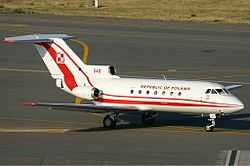
As of November 2012 no more than 17 Yak-40 remain in military service (possibly fewer, with the unclear situation in Syria). Known operators are:
-
 Angola
Angola - Angolan Air Force – former operator
-
 Bulgaria
Bulgaria - Bulgarian Air Force – former operator
-
 Cuba
Cuba - Cuban Air Force – 3 in service
-
 Czechoslovakia
Czechoslovakia - Czechoslovakian Air Force – former operator
-
 Czech Republic
Czech Republic - Czech Air Force – 2 in service
-
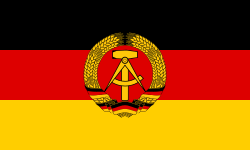 East Germany
East Germany - East German Air Force – former operator
-
 Ethiopia
Ethiopia - Ethiopian Air Force – 1 in service
-
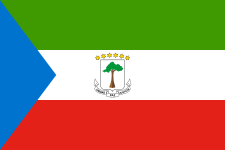 Equatorial Guinea
Equatorial Guinea - Military of Equatorial Guinea – presidential aircraft
-
 Guinea-Bissau
Guinea-Bissau - Military of Guinea-Bissau – former operator
-
 Hungary
Hungary - Hungarian Air Force – former operator
-
 Kazakhstan
Kazakhstan - Armed Forces of the Republic of Kazakhstan – 1[15] in service for VIP flights
-
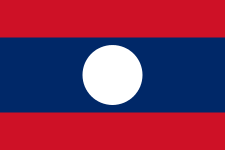 Laos
Laos - Lao People's Liberation Army Air Force – former operator
-
 Lithuania
Lithuania - Lithuanian Air Force – former operator
-
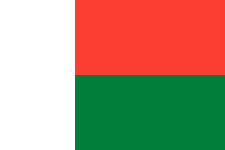 Madagascar
Madagascar - Military of Madagascar – 2 in service
-
 Poland
Poland - Polish Air Force – former operator
-
 Russia
Russia - Russian Air Force – 1 in service
-
 Serbia
Serbia - Serbian Air Force – former operator
-
 Syria
Syria - Syrian Air Force – up to 6 in service, airworthiness unclear
-
 Soviet Union
Soviet Union - Soviet Air Force – former operator
-
 Vietnam
Vietnam - Vietnam People's Air Force – former operator
-
 Yemen
Yemen - Yemen Air Force – 2 in service
-
 Yugoslavia
Yugoslavia - Yugoslav Air Force – former operator
-
 Zambia
Zambia - Zambian Air Force – former operator
-
 Zimbabwe
Zimbabwe - Air Force of Zimbabwe – former operator
Notable accidents and incidents
- On May 4, 1972, an Aeroflot/East Siberia Yak-40 with 18 passengers and crew on approach to Bratsk Airport, Russian SFSR crashed due to wind shear. All aboard perished.[16]
- On February 28, 1973, an Aeroflot/Kazakhstan flight from Semipalatinsk Airport, Kazakh SSR to Ust-Kamenogorsk Airport, Kazakh SSR fell back onto the runway after take-off. All 28 passengers and 4 crew died.[17]
- On July 15, 1975, an Aeroflot/Armenia passenger flight from Zvartnots International Airport, Armenian SSR to Batumi-Chorokh Airport, Georgian SSR on go-around crashed into Mount Mtirala in the Caucasus Mountains killing all 41 on board.[18]
- On August 15, 1975, an Aeroflot/Azerbaijan aircraft from Baku Airport, Azerbaijan SSR to Krasnovodsk Airport (now the airport of Türkmenbaşy, Turkmenistan) stalled and subsequently crashed during approach due to pilot error and unfavourable weather conditions, killing 23 of the 28 on board.[19]
- On September 9, 1976, an Aeroflot/North Kavkaz flight from Rostov Airport, Russian SFSR to Kerch Airport, Ukrainian SSR collided with an Antonov An-24 over the Black Sea 37 km (23 mi) off Anapa due to violation of separation rules, the error of both aircraft crews and probably ground ATC. All 18 occupants of the Yak-40 and 46 people on board the An-24 died.[20]
- On October 7, 1978, an Aeroflot/Kazakhstan flight with 38 people on board departed Sverdlovsk-Koltsovo Airport, Russian SFSR for Kostanay-Narimanovka Airport, Kazakh SSR but the left engine failed about 30 seconds after take off, due to icing. The aircraft lost height and collided with a hill killing all occupants.[21]
- On June 8, 1980, a TAAG Angola Airlines Yak transporting civilians was shot down by a MiG-19 (origin unclear) near Matala, Angola killing all 19 occupants.[22]
- On June 12, 1980, an Aeroflot/Tajikistan on a passenger flight from Leninabad, Tajik SSR (Khujand, Tajikistan since 1991) to Dushanbe Airport, Tajik SSR with 29 on board crashed into a mountain 44 km (27 mi) north-west of the airport due to navigational errors by the crew, killing all occupants.[23]
- On September 18, 1981, an Aeroflot/East Siberia flight from Irkutsk Airport, Russian SFSR to Zheleznogorsk-Ilimskiy Airport, Russian SFSR collided with a Mi-8 helicopter on a training flight while approaching its destination airport. The supposed site of the collision occurred in the clouds. All 33 on board the Yak-40 and seven occupants of the Mi-8 were killed, making it the deadliest Yak-40 incident at the time.[24]
- On January 16, 1987, an Aeroflot aircraft operating Flight 505 crashed after takeoff in Tashkent, Uzbek SSR after encountering another aircraft's wake vortex.[25]
- On January 24, 1988, an Aeroflot/Privolzhsk aircraft experienced failure of number 1 and 3 engines during take-off from Nizhnevartovsk Airport, Russian SFSR. Engine No. 2 also experienced some problems, but recovered while engines Nos. 1 and 3 eventually failed. The plane stalled, crashed and broke up, killing 27 of 31 on board. Cause was possible crew error.[26]
- On August 2, 1988, at Sofia Airport, the Balkan Yak-40 LZ-DOK crashed on take-off. All civil traffic had been halted minutes before because of the departure of the Bulgarian leader Todor Zhivkov's Tupolev Tu-154. After the delay, air traffic control cleared LZ-DOK for take-off to Varna, asking the crew to expedite their departure. Trying to leave in a hurry, the crew did not set the trim correctly and began their take-off run from the middle of the 3000 m runaway. The aircraft failed to become airborne, overran the runway into a ravine and caught fire, with 28 of 37 occupants being killed.
- On August 1, 1990, an Aeroflot/Armenia Yak-40 traveling from Zvartnots International Airport, Armenian SSR to Stepanakert Airport, Azerbaijan carrying 47 passengers, crashed when the aircraft hit a mountain 22 km (14 mi) away from its destination killing all on board. The cause was most likely pilot error (premature descent).[27]
- On November 14, 1992, Vietnam Airlines Flight 474 with 31 passengers and crew flying from Ho Chi Minh City-Tan Son Nhat International Airport, Vietnam to the previously civilian Nha Trang Airport, Vietnam impacted obstacles on approach killing all but one passenger. Adverse weather conditions might have been involved (unclear at investigation).[28]
- On August 28, 1993, a Tajikistan Airlines non-scheduled flight that was grossly overloaded with 81 passengers and five crew members overran the runway at Khorog Airport, Tajikistan and fell into the Panj River. The crew were killed and only four passengers survived. The crew may have been forced to overload the aircraft. This was the worst accident involving a Yak-40.[29]
- On February 25, 1994, an Expresso Aéreo plane (OB-1559), piloted by two Russians and one Peruvian,[30] struck Mount Carpish six minutes after leaving Tingo María, Peru for Lima. The 31 occupants were killed.[31]
- On September 26, 1994, a Cheremshanka Airlines flight from Krasnoyarsk Airport, Russia to Tura was unable to land at Tura because of bad weather so was divereted to Vanavara. It ran out of fuel due to crew and ATC errors and crashed while attempting an emergency landing on a river, 41 km (25 mi) from Vanavara. All 28 passengers and crew were killed.[32]
- On November 5, 1994, another Peruvian aircraft (OB-1569) belonging to the Amazonic regional airline Servicios Aéreos Amazónicos, that was serving the Trujillo-Saposoa-Juanjuí-Tocache-Lima schedule, crashed into the Saposoa River after overrunning the airstrip from the town of the same name. The aircraft either crashed due to heavy rain reported at the time, due to a pedestrian accidentally crossing into the runway or due to both. From the 31 occupants, 26 passengers and 5 crew, 5 passengers and 1 crewmen died.[33][34][35]
- On 19 February 1997, a Semeyavia Yakovlev Yak-40 overshot the runway on landing at Semey Airport, Kazakhstan following a scheduled domestic passenger flight. There were no fatalities among the 14 passengers and four crew members on board, but the aircraft was damaged beyond repair.[36]
- On May 17, 2001, a Faraz Qeshm Airlines flight departed Tehran, Iran heading for Gorgan Airport, Iran carrying 30 people, including the Iranian Transport Minister Rahman Dadman, two deputy ministers and seven more members of parliament was forced to divert due to bad weather conditions and was later discovered crashed into the Elburz mountains, Iran. All on board perished.[37]
- On January 13, 2004, Uzbekistan Airways flight 1154 from Termez Airport, Uzbekistan to Tashkent International Airport, Uzbekistan, carrying 37 passengers and crew, crashed; the crew failed to descend for approach on time. Finding the runway too short to land, a go-around was attempted but failed. The plane touched down beyond the end of the runway and the left wing struck a concrete building, with the subsequent crash and fire killing all on board.[38]
Specifications (Yak-40)

Data from Jane's All The World's Aircraft 1976–77.[7]
General characteristics
- Crew: 3 (two pilots, one flight engineer)
- Capacity: 32 passengers
- Length: 20.36 m (66 ft 9½ in)
- Wingspan: 25.00 m (82 ft 0¼ in)
- Height: 6.50 m (21 ft 4 in)
- Wing area: 70.00 m² (753.5 ft²)
- Empty weight: 9,400 kg (20,725 lb)
- Max. takeoff weight: 15,500 kg (34,170 lb)
- Powerplant: 3 × Ivchenko AI-25 turbofans, 14.7 kN (3,300 lbf) each
Performance
- Maximum speed: 550 km/h (297 knots, 342 mph) at 7,000 m (23,000 ft) (max cruise)
- Range: 1,800 km (971 nmi, 1,118 mi)
- Service ceiling: 8,000 m[39] (26,240 ft)
- Rate of climb: 8.0 m/s (1,575 ft/min)
See also
- Related development
- Aircraft of comparable role, configuration and era
- Fokker F28
- Fokker F70
- VFW-Fokker 614
- Related lists
References
- ↑ Stroud 1968, p. 269–270.
- ↑ Gunston and Gordon 1997, p. 185.
- ↑ Gunston and Gordon 1997, pp. 185–186.
- ↑ Stroud 1968, p. 270–272.
- ↑ 5.0 5.1 5.2 5.3 Gordon Komissarov and Komissarov 2005, p. 303
- ↑ Gunston and Gordon 1997, p. 187.
- ↑ 7.0 7.1 7.2 7.3 Taylor 1976, pp. 448–449.
- ↑ Stroud 1968, pp. 272–273.
- ↑ 9.0 9.1 Gunston and Gordon 1997, pp. 186–187.
- ↑ 10.0 10.1 Gunston and Gordon 1997, p. 189.
- ↑ World Airlines Census 2013: http://www.flightglobal.com/airspace/media/reports_pdf/world-airliner-census-2013-106686.aspx
- ↑ Beek Air, current fleet: http://www.bekair.com/sections/flot
- ↑ 13.0 13.1 Ottenhof, 1996, p. 418
- ↑ Ottenhof, 1996, p.419
- ↑ UN-87488
- ↑ "ASN Aircraft Accident Yakovlev 40 CCCP-87778 Bratsk Airport (BTK)". Aviation Safety Network. Retrieved 2012-10-09.
- ↑ "ASN Aircraft Accident Yakovlev 40 CCCP-87602 Semipalatinsk Airport (PLX)". Aviation Safety Network. Retrieved 2012-10-09.
- ↑ "ASN Aircraft Accident Yakovlev 40 CCCP-87475 Batumi-Chorokh Airport (BUS)". Aviation Safety Network. Retrieved 2012-10-09.
- ↑ "ASN Aircraft Accident Yakovlev 40 CCCP-87323 Krasnovodsk Airport (KRW)". Aviation Safety Network. Retrieved 2012-10-09.
- ↑ "ASN Aircraft Accident Yakovlev 40 CCCP-87772 Anapa (Black Sea)". Aviation Safety Network. Retrieved 2012-10-09.
- ↑ "ASN Aircraft Accident Yakovlev 40 CCCP-87437 Sverdlovsk-Koltsovo (SVX)". Aviation Safety Network. Retrieved 2012-10-09.
- ↑ "ASN Aircraft Accident Yakovlev 40K DT-TYC Matala". Aviation Safety Network. Retrieved 2012-10-09.
- ↑ "ASN Aircraft Accident Yakovlev 40 CCCP87689 Dushanbe". Aviation Safety Network. Retrieved 2012-10-09.
- ↑ "ASN Aircraft Accident Yakovlev 40 CCCP-87455 Zheleznogorsk-Ilimskiy". Aviation Safety Network. Retrieved 2012-10-09.
- ↑ "ASN Aircraft Accident Yakovlev 40 CCCP-87618 Tashkent-Yuzhny". Aviation Safety Network. Retrieved 2012-10-09.
- ↑ "ASN Aircraft Accident Yakovlev 40 CCCP-87549 Nizhnevartovsk Airport (NJC)". Aviation Safety Network. Retrieved 2012-10-09.
- ↑ "ASN Aircraft Accident Yakovlev 40 CCCP-87433 Stepanakert". Aviation Safety Network. Retrieved 2012-10-09.
- ↑ "ASN Aircraft Accident Yakovlev 40 VN-A449 Son Trung". Aviation Safety Network. Retrieved 2012-10-09.
- ↑ "ASN Aircraft Accident Yakovlev 40 87995 Khorog". Aviation Safety Network. Retrieved 2012-10-09.
- ↑ "Peru Tragedia Aérea". El Tiempo.com. 1994-02-27. Retrieved 2013-04-15.
- ↑ "ASN Aircraft Accident Yakovlev OB-1559 Tingo Maria". Aviation Safety Network. Retrieved 2012-10-09.
- ↑ "ASN Aircraft Accident Yakovlev 40 RA-87468 Vanavara". Aviation Safety Network. Retrieved 2012-10-09.
- ↑ http://aviation-safety.net/database/record.php?id=19941105-0
- ↑ http://www.baaa-acro.com/1994/archives/crash-of-a-yakovlev-yak-40-in-saposoa-8-killed/
- ↑ http://www.apnewsarchive.com/1994/Plane-Crashes-in-Peruvian-Jungle-At-Least-20-Injured/id-f45bcb9f15e7dc59446f79933bb2309b
- ↑ "ASN Aircraft Accident Yakovlev 40 UN-87233 Semipalatinsk Airport (PLX)". Aviation Safety Network. Retrieved 2012-10-09.
- ↑ "ASN Aircraft Accident Yakovlev 40 EP-TQP Sari". Aviation Safety Network. Retrieved 2012-10-09.
- ↑ "ASN Aircraft Accident Yakovlev 40 UK-87985 Tashkent Airport (TAS)". Aviation Safety Network. Retrieved 2012-10-09.
- ↑ Gunston 1995, p. 492.
Bibliography
- Gordon, Yefim, Dmitry Komissarov and Sergey Komissarov. OKB Yakovlev: A History of the Design Bureau and its Aircraft. Hinkley, UK: Midland Publishing, 2005. ISBN 1-85780-203-9.
- Gunston, Bill. The Osprey Encyclopedia of Russian Aircraft 1875–1995. London:Osprey, 1995. ISBN 1-85532-405-9.
- Gunston, Bill and Yefim Gordon. Yakovlev Aircraft since 1924. London, UK: Putnam Aeronautical Books, 1997. ISBN 1-55750-978-6.
- Ottenhof, Guus; Hillman, Peter and Jessup, Stuart. Soviet Transports. Aviation Hobby World. 1996. ISBN 0-907178-60-X.
- Stroud, John. Soviet Transport Aircraft since 1945. London:Putnam, 1968. ISBN 0-370-00126-5.
- Taylor, John W. R. Jane's All The World's Aircraft 1976–77. London:Jane's Yearbooks, 1976. ISBN 0-354-00538-3.
External links
| Wikimedia Commons has media related to Yakovlev Yak-40. |
- List of all Yak-40 aircraft used by Polish Air Force
- Watch a video of the plane in action
- Walkaround Yak-40 (Kiev's Aviation Museum, Ukraine)
- "The Yak-40" a 1967 Flight article
| ||||||||||||||||||||||||||||||||||
| ||||||||||||||||||||||

